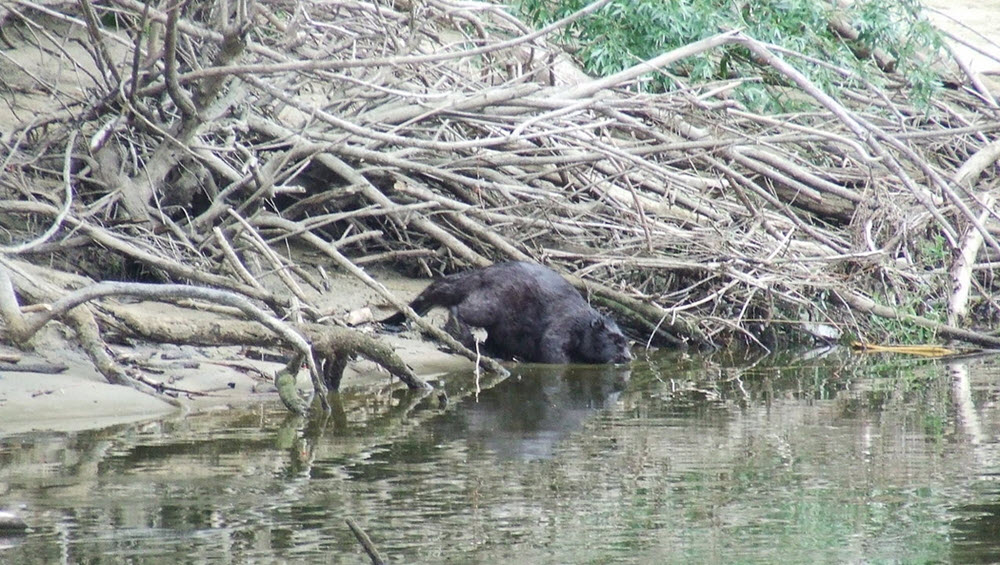Reintroduction of beavers to Europe
Contents
Beavers were once widespread in Europe, but their numbers dwindled due to excessive hunting and habitat destruction. In the 20th and 21st century, the Eurasian beaver has been the focus of several European reintroduction projects.
Beavers were historically trapped and hunted for their fur, meat and castoreum, and because they were erroneously believed to compete with fishermen by eating a lot of fish. (In reality, they are herbivores.) Castoreum is a yellowish compound produced by mature beavers, and it has historically been used as medicine, in perfume, in food and drinks, and to boost honey production.

Fossil evidence show that the range of the Eurasian beaver once ran from Western Europe to the Chinese-Mongolian border region. As early as the 1300s AD, hunting and trapping in Europe had diminished the population dramatically, and the species had already vanished from at least seven European countries.
By the early 21st century, successful conservation projects – including reintroductions – had brought the number of European beavers up to well over 600,000 and the species is today listed as Least Concern by IUCN.
Examples of European countries were beavers have made a come-back are Sweden, the Netherlands, Germany, Serbia, the United Kingdom, Austria, Bulgaria, and Denmark.
Examples of Eurasian beaver reintroductions in Europe
Sweden
The Eurasian beaver became extinct in Sweden in the 1870s due to a combination of hunting/trapping and ditching (turning wetlands into dry land). The first reintroduction took place in 1922, when Eurasian beavers were moved from Norway to Sweden.
In the 1920s and 1930s, roughly 80 beavers were introduced to 19 different locations in Sweden. Today, there are over 100,000 wild beavers in Sweden.
Bavaria (Germany)
The Eurasian beaver was completely extinct from Bavaria by the end of the 1860s, but successful reintroductions in 1966-1982 brought the numbers back up again. Today, roughly 6,000 beavers live in Bavaria.
Austria
The Eurasian beaver was re-introduced in Austria in 1976-1982 when roughly 45 individuals were released in the Danube-Auen National Park, which is located in the Danube-Morava floodplains, roughly 40 km downstream from Vienna.
Today, roughly one thousand beavers live in the Danube-Morava area and the Inn-Salzach valley. Their range even includes the city of Vienna. By 2020, an estimated 230 beavers lived in the Vienna region outside the borders of the national park.
Romania
The Eurasian beaver became extinct from Romania in the early 1800s but was re-introduced in 1998. The initial release of 21 beavers took place along the Olt River, from which the beavers gradually spread into other rivers in the Covasna county. By 2014, the beavers had reached the Rumanian part of the Danube delta. Today, they can even be found in small creeks in the hills of Transylvania and on the northern side of the Fagaras mountains.
Denmark
In 1999, beavers were re-introduced in Denmark, as a total of 18 beavers were released at Klosterheden in the western part of Jylland (the peninsula of Northern Europe that forms the continental portion of Denmark). Since then, beavers have been released on Sjælland as well, at Arresø – Denmark´s largest lake by area. (Sjælland is the largest island in Denmark proper and home to most of Copenhagen.)
Spain
Beavers were reintroduced to Ebro in Spain in 2003. Ebro is the longest river entirely within Spain. It rises in Cantabria and reaches the Mediterranean Sea in southern Catalonia.

Scotland (UK)
It is still unclear how Eurasian beavers managed to return to the river Tay catchment in the early 2000s. They might have escaped from captivity, or maybe they were released illegally, possibly as a part of a non-approved ”guerilla style” reintroduction program. These mystery beavers formed the first sustained and significant population of wild Eurasian beavers in Scotland in over 400 years. Between 2001 and 2011, the population grew from 20 to 100 individuals.
The Scottish Natural Heritage decided to remove them, and the first capturing took place in December 2010. This individual was moved from the River Ericht to Edinburgh Zoo, where it died within a few months.
In March 2012, the Scottish Government decided that the beavers could stay in the wild, at least temporarily, pending sustainability studies. As a part of these studies, beavers were released in Knapdale, Argyll.
In November 2016, the Scottish Government granted the beavers permission to stay in Scotland permanently and extend their range naturally. They are now protected as a native species within Scotland.
England (UK)
In 2019, a beaver pair was reintroduced to North Essex. This reintroduction is part of a larger management scheme for waterways and wetlands in East Anglia.
North American beavers in Europe
In addition to the native Eurasian beaver (Castor fiber), the North American beaver (Castor canadensis) is also present in the wild in Europe, after being imported by humans. In Finland, a major chunk of the total beaver population is actually Castor canadensis as such individuals were imported after the native species had gone extinct in the country.
The first release of North American beavers in Finland took place in 1937, and back then they were not considered a separate species from the Eurasian beaver. 17 Eurasian beavers were introduced from Norway and only 7 North American beavers from across the Atlantic, but the North Americans turned out to be more successful in Finland. By the turn of the century, these 7 individuals had given rise to a population of over 12,000 Castor canadensis in Finland. At this point, roughly 90% of all the beavers in the country were C. canadensis.
So far, Finland and Russian Karelia are the only places in Europe with significant populations of North American beaver. Examples of countries where small populations have been reported in the 20th or 21st century are Germany, Poland, Luxembourg, and Belgium.